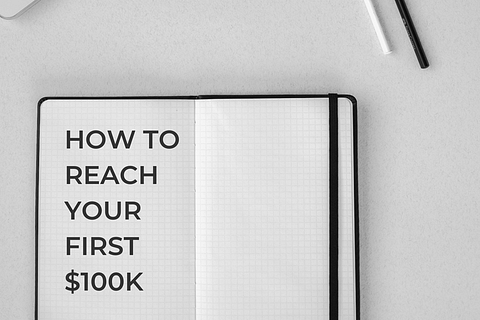
This post will help you create a financial plan that will equip you to reach your goals. Specifically, it will walk you through two ways to create budget categories.
Additionally, it will help you reach both your financial and non-financial goals. Financial goals include paying off credit card debt, buying your first home, or investing in an IRA. Conversely, non-financial goals include anything you spend money on that brings you joy. This could be an extended beach vacation or a front-row seat to see your favorite artist perform.
No matter what your goals are, the Personal Finance Planner will help you reach them. It tracks your incomes, expenses, investments, and net worth. Then it demonstrates how your financial habits impact your progress towards your goals. This will help you identify decisions you can make to reach your financial goals faster.
Customizing Your Planner
You will set up to 10 custom categories for income, expenses, investments, and net worth. The rest of this post will focus on expenses, but the takeaways here apply to the others as well.
A good category list will have one category for every item. Each item should only fit into one category. To account for unexpected items, include an other category.
There are two high-level approaches you could use to define your categories. The first is the standard approach and the second is the expedited approach.
The Standard Approach
The standard approach will provide a clear picture on the types of things you spend money on. The standard approach will provide a higher level of detail than the expedited. It’s more likely you’ll use upwards of 6 budget categories.
This approach is best for you if you…
- Want to know how you are allocating your money towards each category.
- Want to identify specific places you could be more intentional with spending.
- Feel there is an opportunity to optimize your spending further.
In this approach, you put in the time to get a complete picture of your current financial landscape. You don’t lose any information using this approach.
The Expedited Approach
The expedited approach will summarize the amounts you are spending each month. But, unlike the standard approach, it won’t provide the detail of what exactly you are spending on. It’s likely you may use between 1-3 budget categories using this approach.
This approach may be best for you if you…
- Want to see how your total monthly income, expenses, and investments impact your net worth.
- Don’t need to know what you spend your money on each month, just how much you’re spending.
- Don’t have 30 minutes to dedicate to this each month. You have like 5 minutes.
In this approach, you give up a detailed view of your spending habits to save time.
This approach may be best if you have limited time and want to understand how the total of your monthly financial decisions impact your net worth.
Choose an Approach for Your PFP
Would the standard approach or the expedited approach work better for you? Jump to instructions for getting started with the standard or expedited approach.
Budget Categories for the Standard Approach
You’ve decided that you want to gain a complete picture of your financial habits. This section will help you define your categories using the standard approach.
Write down the types of purchases you make in a typical month. For example, you may have a pet. In a typical month, you may spend money on vet appointments, food, toys, and medicine.
Next, consider how to bucket expenses into high-level categories. The pet expenses example earlier could be bucketed under a “Pet” category. As another example, a housing bucket could include rent/mortgage, water, electric, gas, wifi, and renters/home insurance.
Here’s a list of common budget categories to help you get started:
- Housing
- Transportation
- Food
- Entertainment
- Insurance
- Travel
- Pets
- Clothing
- Kids
- Debt payoff
- Health
- Gifts
- Charitable donations
- Miscellaneous
Brainstorm the different categories you may use. Then, choose up to 10 categories that provide the level of detail you want to see each month.
Remember, a good category list will have one category for every item. Also include an other category to account for unexpected items.
Once you’ve selected your categories, enter these names on the goal definition sheet.
If you haven’t downloaded your Personal Finance Planner yet, get your 2022 Personal Finance Planner here.
Budget Categories for the Expedited Approach
You’ve decided that you want to gain a high-level overview of your financial habits. This section will help you define your categories using the expedited approach.
Consider the methods you use to make purchases in a typical month. For example, you may primarily use a credit card and a debit card. You could use three categories: 1 for your credit card, 1 for your debit card, and 1 as an other category.
Remember, a good category list will have one category for every item. Also include an other category to account for unexpected items.
Select your categories based on the typical payment methods you use.
Once you’ve selected your categories, enter these names on the goal definition sheet.
If you haven’t downloaded your Personal Finance Planner yet, get your 2022 Personal Finance Planner here.
Next Steps
From here, you can begin thinking about your monthly goals for each category. If you don’t have your planner yet, download your personal finance planner here to get started.
Do you have a different method for creating your categories? We want to hear from you. Let us know how you approached it.
Is there someone else in your life who would benefit from having a financial planner? If so, share the planner with them.








[…] If you want more guidance on defining categories, check out these tips for setting budget categories. […]